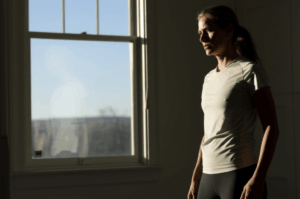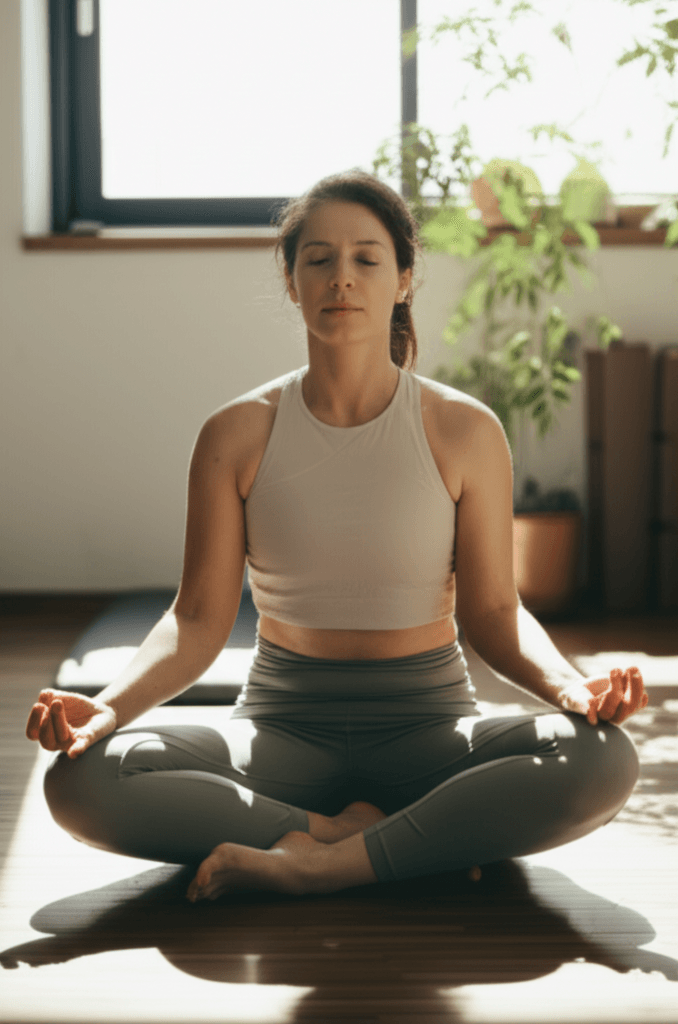Feeling stressed and overwhelmed? You’re not alone. In today’s fast-paced world, it’s easy to get caught up in the hustle and bustle, leaving little time for self-care. But what if I told you that you could significantly reduce your stress levels in just 10 minutes? Intrigued? I was too. That’s why I decided to try the new “mental health break” routine from the internet’s favorite yoga instructor, Adriene Mishler of Yoga With Adriene, and the results were surprisingly effective.
The Allure of Yoga With Adriene
For those unfamiliar, Adriene Mishler has cultivated a massive online following with over 13 million subscribers on YouTube. Her appeal lies in her accessible and simple yoga routines, often short and always beneficial. Whether you’re a seasoned yogi or a complete beginner, Adriene’s calming voice and clear instructions make yoga feel less intimidating and more inviting. Her routines are designed to be followed along, creating a sense of community and support, even in a virtual setting.
What is this “Mental Health Break” Routine?
Adriene’s “Mental Health Break” routine is a 10-minute practice designed to ground the body and still the mind. It combines breath awareness with gentle movements to ease you into a state of relaxation. The routine requires no special equipment, making it accessible to anyone, anywhere. Though a yoga mat or blanket can enhance comfort, it’s not essential.
My Experience: Can 10 Minutes Really Make a Difference?
As someone who often struggles to switch off during the workday, I was skeptical. Even when I step away from my desk for a walk or a quick workout, my mind remains occupied with my to-do list. However, I was pleasantly surprised by how effective this routine was in helping me disconnect and de-stress.
The Routine: A Step-by-Step Breakdown
The “Mental Health Break” routine incorporates several key elements:
- Breath Awareness: The practice begins with a focus on mindful breathing, a cornerstone of yoga. Deep, conscious breathing helps to activate the parasympathetic nervous system, which is responsible for the “rest and digest” response, counteracting the effects of stress.
- Gentle Movement: The routine includes a series of gentle movements designed to release tension in the body. These movements are not strenuous, making them suitable for all fitness levels.
- Grounding Techniques: Grounding techniques help to connect you to the present moment and create a sense of stability. This can be particularly helpful when feeling anxious or overwhelmed.
Some of the poses incorporated in the routine include:
- Table Top Pose: Involves starting on your hands and knees, aligning your wrists under your shoulders and your knees under your hips, which helps improve core strength and spinal mobility.
- Cat-Cow Pose: Transitions between arching and rounding your back while coordinating with your breath, enhancing mental clarity and mind-body connection.
- Anjali Mudra: Concluding the session by rubbing the palms together to generate heat, then placing them on the chest, promoting a sense of closure, gratitude and peace.
The Science Behind the Serenity
Yoga’s stress-relieving benefits are not just anecdotal; they’re backed by science. Research has shown that yoga can reduce blood pressure, improve a sense of well-being, and decrease anxiety levels. The deep breathing and meditation associated with yoga affect the hypothalamic-pituitary-adrenal axis (HPA) in the brain, which controls the sympathetic (fight or flight) and parasympathetic nervous systems. By reducing sympathetic nervous system activity and increasing the parasympathetic response, yoga helps to lower heart rate and blood pressure, promoting relaxation.
Moreover, yoga cultivates a better relationship with oneself. A 2024 study in the Journal of Health Psychology found that participants in Kundalini yoga experienced more spiritual well-being and self-compassion after six weeks of practice. Yoga is also considered a promising defense against major depressive disorder (MDD).
Yoga Poses for Stress Relief: A Deeper Dive
While Adriene’s “Mental Health Break” offers a quick and effective way to de-stress, there are many other yoga poses that can help relieve stress and promote relaxation. Here are a few examples:
- Child’s Pose (Balasana): This pose is a nurturing position that eases stress and soothes the mind.
- Corpse Pose (Savasana): Typically practiced at the end of a yoga session, this pose allows for deep relaxation and integration of the practice.
- Legs-Up-the-Wall Pose: This pose is incredibly relaxing and can help to calm the nervous system.
- Revolved Abdomen Pose (Jathara Parivartanasana): This gentle spinal twist massages the abdomen to relieve digestive discomfort and release tension in the spine.
- Rag Doll Pose (Uttanasana Variation): This pose releases tension in the lower back, neck, and shoulders.
- Bridge Pose: Reduces anxiety, fatigue, backaches, and insomnia.
- Head-to-Knee Forward Bend: Calms the brain and helps with headaches, fatigue, and insomnia.
- Easy Pose (Sukhasana): Opens hips, lengthens spine, promotes serenity, and relieves physical and mental exhaustion.
Incorporating Yoga into Your Daily Life
One of the great things about yoga is that it can be incorporated into your daily life in many ways. You don’t need to attend a full-length class to experience the benefits. Mini-bits of yoga can be integrated into your day to help manage stressful moments.
- Before a test: Do easy neck and shoulder rolls at your desk to relieve tense muscles.
- While studying: Try simple yoga moves to relax any tense areas.
- Before bed: Do a few yoga stretches, like child’s pose, to help you relax and tune out the world.
- Balancing poses: Tree pose, can help focus your energy so you can concentrate on what you need to do!
Tailoring Yoga for Mental Health
For yoga teachers, it’s essential to be aware of mental health considerations when working with students. Mental Health Aware Yoga trainings can equip teachers with the knowledge and skills to support students experiencing mental health challenges, creating a safe and transformative space for all.
Final Thoughts: A 10-Minute Investment in Your Well-being
My experience with Adriene Mishler’s “Mental Health Break” routine was a positive one. In just 10 minutes, I felt a noticeable reduction in my stress levels and a greater sense of calm. Whether you’re new to yoga or a seasoned practitioner, this routine is a valuable tool for managing stress and promoting overall well-being. So, the next time you’re feeling overwhelmed, take a 10-minute mental health break and experience the transformative power of yoga for yourself.







